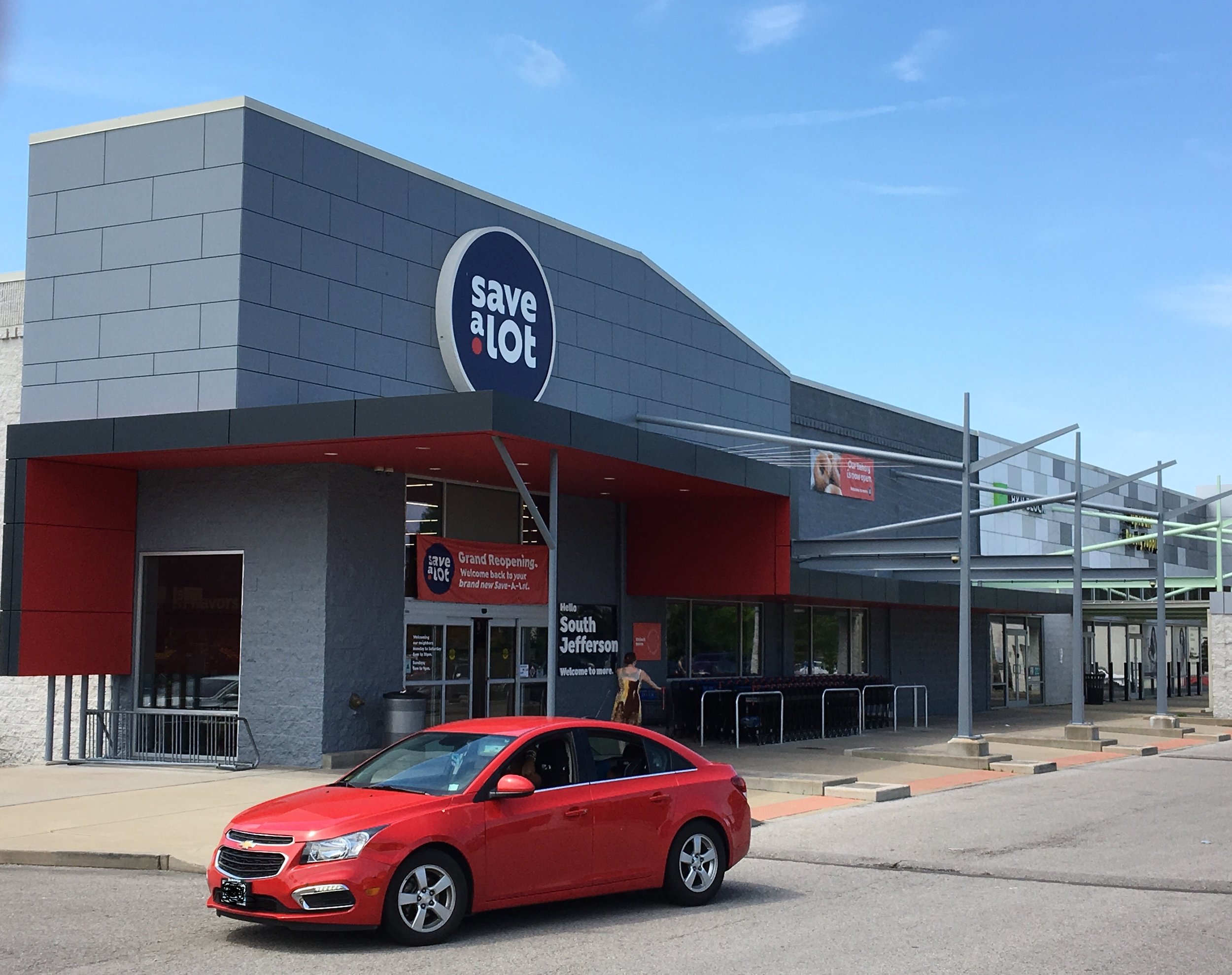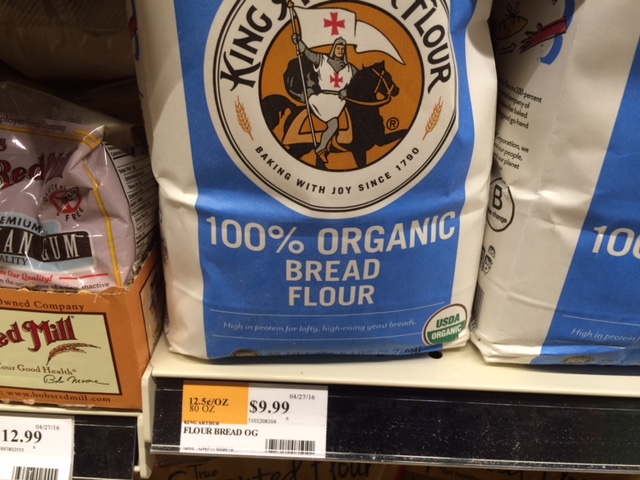***Updated May 24, 2018 with correction on Schnucks at 8, not 6 city locations.***
Recently I gave some thought to the lack of retail in St. Louis. The take home being we're at an all-time low for national retail in our fair city.
This is likely due to online sales pressure and population losses.
It got me wondering if the same vanishing of retail will spill over into the grocery markets. Even the most essential offerings required for survival disappear if the humans disappear...like many neighborhoods in North City have shown.
However, lack of food is way more dire than lack of a JC Penny...your neighborhood can quickly become a food desert.
Food deserts, defined as: "parts of the country vapid of fresh fruit, vegetables, and other healthful whole foods, usually found in impoverished areas. This is largely due to a lack of grocery stores, farmers’ markets, and healthy food providers." (source)
Again, food deserts are usually the result of population losses and low incomes.
This isn't the first time I've researched food deserts in St. Louis, back in 2016, I ran across one such attempt to address the population decline and shuttering of grocery stores unable to stay afloat when everyone is leaving, the St. Louis Metro Market Bus, a noble effort to go to the people who need fresh food the most and provide it in a "pop-up" setting.
They reported 15 food deserts in St. Louis. But, there no single definition for this designation. Per the United States Department of Agriculture (USDA) map and definition, a census tract qualifying as low-income and and within 1 -10 miles from a grocery store offering fresh food is an urban food desert. The USDA's Economic Research Service developed a nice interactive map based on Census data and grocery store proximity.
“The Food Access Research Atlas maps food access indicators for census tracts using ½-mile and 1-mile demarcations to the nearest supermarket for urban areas, 10-mile and 20-mile demarcations to the nearest supermarket for rural areas, and vehicle availability for all tracts. Users of the Atlas can view census tracts by food access indicators using these different measures to see how the map changes as the distance demarcation or inclusion of vehicle access changes. The map includes updated estimates using 2015 data and allows users to compare these new estimates with those from 2010.”
Per this analysis, things don't look too bad as a whole. The northwest section of the city including the neighborhoods of Walnut Park West, Walnut Park East, Penrose, Hamilton Heights and the West End qualify. And in the central corridor, parts of Forest Park Southeast and Botanical Heights qualify.
A quick look at the 2010 Census data for these neighborhoods indicate some staggering losses in all cases except the West End that showed a marginal gain:
This data made me think of two items worthy of contemplation:
1. What about parts of the city that appear to be gaining residents like Forest Park Southeast, Botanical Heights and the West End? Will they see a grocery store as more and more residents fill the former empty lots and rehabbed abandoned buildings?
2. Where are the larger chain grocery stores located throughout St. Louis?
Some thoughts on the first item, the future of neighborhoods on the rise.
After reading a recent Tweet from the developers of Chroma, the massive Forest Park Southeast building under construction near Chouteau and Vandeventer with over 17,000 square feet of retail and ~236 apartments and a ~383 car garage, they were mentioning that 6 of 8 first floor retail bays are leased and only 2 remain.
No word of a grocery store, or other tenants.
I don't live in this part of town, so I can't speak with authority on what is most needed to improve the quality of life for residents, but my gut thinking was a grocery store. Maybe one even closer to the Botanical Heights side of the neighborhood where the USDA data showed a food challenged area.
My guess is that FPSE and Botanical Heights will see a population gain in the 2020 Census based on the amount of new units and abandoned properties coming back on the market.
Yet, I presume most people living in FPSE are older and younger households, without kids. As a family of five, we have to load up on groceries. A full cart is ~$250 at Shop-N-Save, Sav-A-Lot or Aldis. Even more at Schnucks or Fields Foods. Dierbergs and Trader Joe's have no St. Louis locations, so we don't shop there. I doubt there are scads of fill-the-cart customers in this part of the city.
Yet, I was bummed not to read of a full service grocery store in FPSE to date.
Another downer is that I'm not as bullish on the north west neighborhood income or population numbers. I expect a leveling off, or continued decline in these parts of the city. People are voting with their feet and leaving.
Secondly, what about the distribution of grocery stores throughout the city? I am counting Schnucks, Fields Foods, Whole Foods, Shop-N-Save, Sav-A-Lot and Aldi. I'm not including farmer's markets and the smaller places like Ruler Foods or Vincent's Market or United Provisions (is that in St. Louis or University City?).
I started thinking about industry consolidations in the supermarket area and how this could affect St. Louis. Shop-N-Save, a company that opened it's first store in 1979 in my hometown of Belleville, Illinois is selling it's assets. They are currently headquartered in Kirkwood, Missouri and are a wholly owned subsidiary of SuperValu out of Eden Prairie, Minnesota.
They are down to a single store in St. Louis at Kingshighway and Chippewa. There is a second location that straddles the St. Louis/Shrewsbury line, but Shop-N-Save lists this address in Shrewsbury, so I'm not counting that as a St. Louis store.
The Tower Grove South location closed in late 2017.
The St. Louis Post-Dispatch reported Shop-N-Save is also closing it's Maplewood, MO (pop. 7,868) location just west of St. Louis constricting shopping choices in the southwest parts of the city.
This is all part of Shop-N-Save's parent company selling all regional stores, hopefully as a package. The future of Shop-N-Save is up in the air.
Next is Sav-A-Lot, who's local corporate entity is in the small Missouri town of Earth City, which doesn't have a single resident to support. They recently renovated and updated their location on Jefferson/Lafayette (thanks!). This is one of our key go-to places to stock up.
They have a total of seven stores in St. Louis, nicely distributed north to south.
Next is Aldi (Aldi's if you're nasty) headquartered out of Essen, Germany with it's U.S. corporate in Batavia, Illinois. They have four St. Louis locations, two north, two south.
Then you have the largest regional grocery chain, Schnucks, which is located in an unincorporated swath of land in the suburbs west of St. Louis, just north of Creve Coeur, Missouri. They have eight St. Louis locations distributed nicely throughout the city.
Schnucks includes Culinaria, the downtown location...arguably one of the most important new locations for grocery stores in the last 20 years.
Next you have Fields Foods, headquartered in the Lafayette Square neighborhood of St. Louis, who currently have a single location at 1500 Lafayette Avenue, just south of the Georgian in the Peabody Darst Webbe Neighborhood. They are planning a second location in Dogtown near the intersection of Clayton and Tamm. They will be part of a $25M mixed use building that is going in on a former site of a lumberyard.
I like the prospects of this local business and the fact that their expansion is taking place in a high-need, high-density neighborhood in a mixed use building.
Whole Foods has a single St. Louis location in the Central West End, and while their prices are nuts and target upper class customers, they are still an option. As an example, a pound of wheat flour is $9.99 for "organic", $5.99 for "conventional" and you can get the same flour with the same nutritional profile and quality from Sav-A-Lot for <$2.00.
All that said, there are 22 total grocery stores with 1 more on the way in Dogtown. There are also a handful of locally owned markets.
22 stores means 1 per ~14,000 people.
So what's the future for grocery stores in St. Louis?
Will the continuing population losses mean more food deserts for the parts of town unable to retain residents? Common sense suggests business follows people and their dollars (duh).
If the Dogtown model is any indicator, the city can use more walkable, urban scaled grocery stores in mixed use developments. This will only happen in densely populated areas, though.
One thing I do know is the current sites of Shop-N-Save, FieldsFoods, Sav-A-Lot, Aldi and Schnucks have massive surface parking lots. Way more than would ever be filled with cars. We can build way better buildings in the future.
Should the new model be a smaller one, that fits into the neighborhoods better as opposed to the the massive property with a decent sized store surrounded by a sea of parking?
I think I'm willing to accept a smaller, more urban footprint to meet my needs. Even as a dude who loads up once every other week to feed a ravenous family of teens and preteens.
We can change our model from the old way of thinking, if just the businesses get on board with what the people who are left here, and the people we want to attract will desire.
I'm hopeful for the future of grocery options in St. Louis...not so much on the retail.










